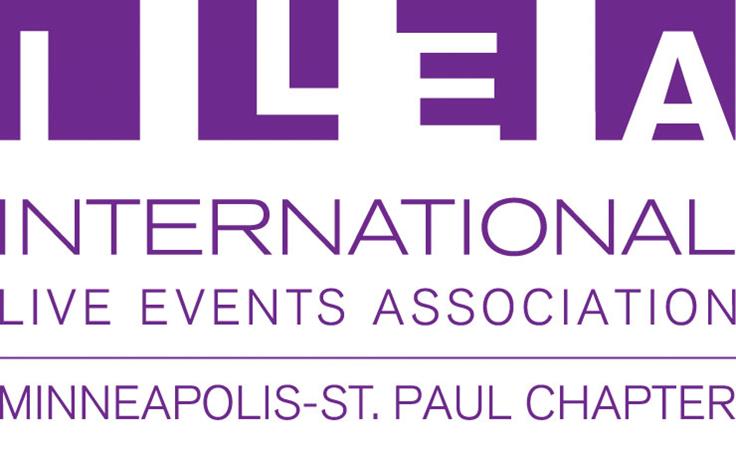Creator of digital platform meetingpages complete event planning directory and resource delivering leads and national, regional and local exposure for event venues, suppliers and destinations in MN, WI, IA & CO markets. In her free time, this 19 year industry veteran enjoys dance, group fitness, and training her young golden retriever dog in competition obedience and confirmation.
Mindful Moments: Trends in Wellness for Today's Meetings and Events
In a world where work-life balance is increasingly prioritized, wellness has become a central theme in how meetings and events are designed. As businesses strive for greater productivity and employee well-being, the integration of health and wellness into meetings and events is no longer a luxury but a necessity. In this edition of The Scoop, we dive into the latest trends in wellness and how they’re shaping today’s corporate meetings and events.
1. Wellness as a Core Element of Event Design
Gone are the days when wellness was an afterthought at conferences or meetings. Today, wellness is woven into the fabric of event planning. Organizers are making intentional efforts to create environments that foster well-being and reduce stress. Whether it’s a conference, a workshop, or a team meeting, here’s how wellness is becoming a fundamental part of the agenda:
Wellness Rooms: Dedicated spaces where attendees can take a break, meditate, or recharge. These rooms often feature comfortable seating, calming lighting, and even guided meditation apps.
Holistic Event Schedules: Incorporating breaks for stretching, hydration, and short mindfulness exercises between sessions to keep energy levels high and minds sharp.
2. Mindfulness Breaks: Short but Effective
One of the most popular wellness trends in meetings and events is the mindfulness break. These short, intentional pauses give attendees the chance to reset, refocus, and recharge during the day. Mindfulness exercises have been shown to reduce stress, enhance focus, and improve decision-making. Some key features of mindfulness breaks include:
Breathing Exercises: Quick, guided breathing exercises that help participants calm their minds and regain focus before diving back into discussions.
Stretching and Movement: Simple stretches or a few minutes of guided movement to counteract the effects of sitting for long periods, which can increase alertness and creativity.
3. Healthy Eating Options and Nourishment
Food plays a crucial role in wellness at meetings and events. Rather than the usual high-sugar, high-caffeine options, there’s a growing shift toward offering nutrient-dense snacks and meals that help maintain energy levels and keep attendees feeling good throughout the day. Some popular options include:
Fresh Fruits and Veggies: Light and energizing snacks like fruit platters, veggie trays, and nuts that keep energy up without the crash.
Superfood Stations: Offering superfoods like quinoa, chia seeds, and leafy greens as part of meal options helps attendees feel nourished and energized.
Hydration Stations: Having water stations infused with fruits, or offering herbal teas and electrolytes, ensures that participants stay hydrated throughout the event.
4. Movement Integration: Active Participation
Sitting through back-to-back sessions can be draining. To counteract this, more events are incorporating movement into their schedules. Movement boosts circulation, reduces stress, and improves cognitive function. Here are a few ways event planners are adding movement to the agenda:
Walking Meetings: Instead of sitting around a table, try walking meetings or breaks that encourage attendees to take a stroll outside. Walking not only reduces physical tension but also stimulates creativity and problem-solving.
Interactive Breakout Sessions: Use standing desks, collaborative activities, or simple games that require participants to get up and move around during breakouts.
5. Nature-Inspired Spaces
Nature has long been known to have a calming effect, and event planners are increasingly bringing the outdoors in. Integrating natural elements into meeting spaces can create a relaxing atmosphere that promotes mental clarity and well-being. Consider these ideas:
Indoor Plants: Adding greenery to meeting spaces can reduce stress and create a fresh, oxygen-rich environment that boosts productivity.
Outdoor Venues: Holding meetings or events in outdoor settings can provide natural light and open air, offering participants a refreshing change from the typical indoor space.
Nature Sounds: Incorporating soothing nature sounds, like flowing water or birdsong, into the background can have a calming effect and help participants focus.
6. Mental Health Support: Creating Safe Spaces
As mental health awareness grows, event organizers are placing more emphasis on providing mental health support during meetings and events. Creating a safe, inclusive environment where participants can access resources or find quiet spaces for self-care is crucial. Some strategies include:
Quiet Zones: Areas where participants can go to relax, recharge, or practice mindfulness without distractions.
On-Site Therapists or Counselors: Some large-scale events offer access to mental health professionals or counselors who can help attendees manage stress or anxiety.
Mental Health Resources: Providing access to mental health apps, self-care tips, or even offering talks or workshops on managing stress and mental well-being.
7. Customizable Wellness Experiences
Personalization is key when it comes to wellness. Attendees want to feel that their individual needs are being met. Offering customizable wellness options ensures that everyone can engage in ways that suit their preferences. Here’s how event organizers are incorporating personalization:
Fitness Tracks: Offering different types of fitness activities, from yoga and Pilates to high-energy group workouts, so participants can choose what works best for them.
Personalized Meditation or Mindfulness Sessions: Providing a variety of guided meditation options, such as those focused on stress reduction, creativity, or relaxation, allows attendees to choose what suits their needs.
8. Sustainability and Wellness: A Perfect Pairing
Sustainability and wellness go hand-in-hand in today’s events. People are increasingly looking for events that align with their values, including those that prioritize environmental and social well-being. To meet this demand, many events are adopting more sustainable practices that promote both physical and environmental health:
Eco-friendly Venues: Holding events in venues that have green certifications or use sustainable practices like reducing waste and conserving energy.
Zero-Waste Initiatives: Implementing zero-waste policies for events, including reusable containers, composting, and minimal plastic usage, promotes overall well-being by caring for the planet.
Eco-conscious Products: Offering wellness products, like biodegradable yoga mats or eco-friendly water bottles, ensures that the wellness experience extends to sustainability.
Wellness is Here to Stay
As organizations continue to recognize the importance of mental and physical health, wellness has become an integral part of the meeting and event experience. From mindfulness breaks and healthy food options to nature-inspired spaces and mental health support, there’s a growing trend toward designing events that support the whole person. The future of meetings and events is one where attendees leave not just with new knowledge, but with renewed energy, clarity, and a greater sense of well-being.
Stay tuned for more insights on the trends shaping the future of meetings and events!










